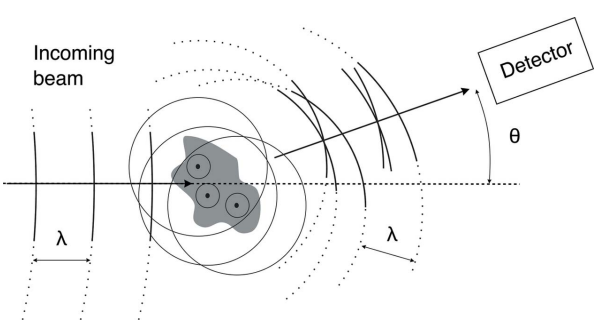A1 - introduction
- experimental technique used to probe into the nanoscale
- typically beam of x-ray (SAXS)/neutrons (SANS) scattered by a sample, and the intensity of the beam downstream is measured as a function of the angle
- detectors are generally far away from the sample to resolve small angles, hence generally large instruments
- for x-rays, electrons are accelerated by an incoming beam, and a secondary EM wave of identical frequency is emitted
- for neutrons, strong interaction causes QM effects, which can be though of as a source of secondary wavefunction
- physics is different but geometry is identical - huygens-like description
- applicable in chemistry physics, biology and materials science but relatively unpopular due to its reputation as a very indirect technique

image: CJ Gommes, S Jakschb and S Frielinghausb (2021)